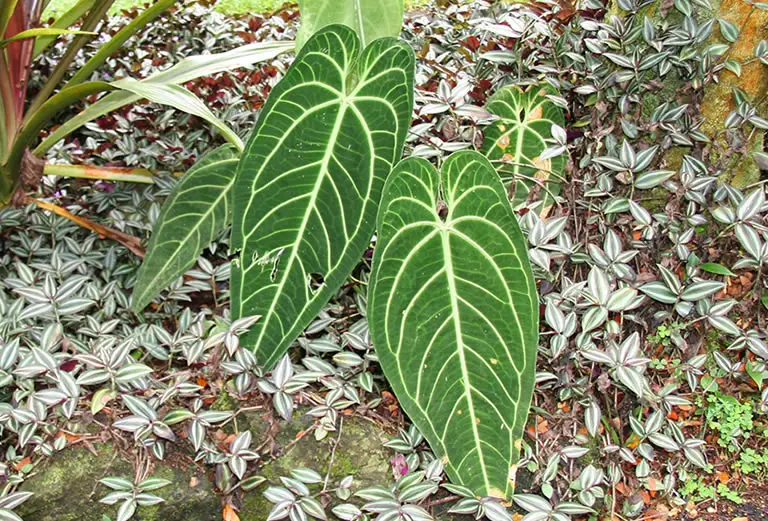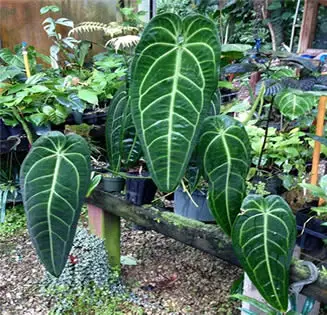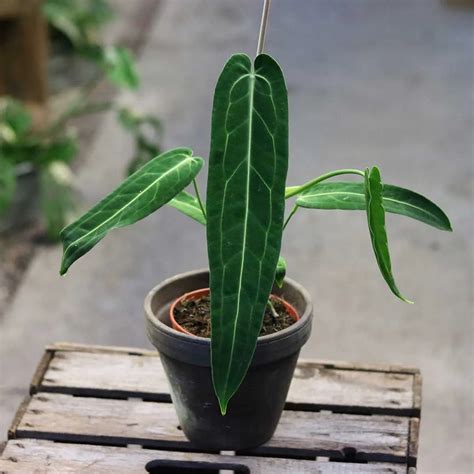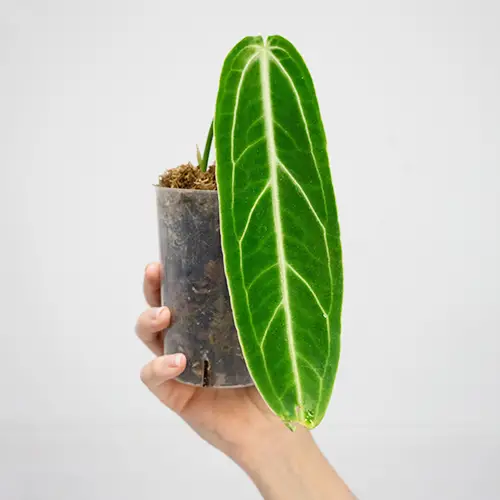Anthurium Warocqueanum Care Guide

If you’re a plant lover drawn to bold, breathtaking foliage, Anthurium warocqueanum—often called the Queen Anthurium—might just steal your heart.
Known for its long, velvety leaves and majestic presence, this tropical stunner brings a regal touch to any indoor jungle.
Though it’s not the easiest plant to care for, once you get the hang of its needs, the Queen will reward you with lush growth and endless visual drama.
Let’s take a closer look at this tropical beauty—where it comes from, what makes it unique, and how to care for it successfully at home.
Table of Contents
Origins and Natural Habitat
Anthurium warocqueanum hails from the rainforests of Colombia, where it grows in warm, humid conditions.

In the wild, it’s often found clinging to trees or nestled among mossy rocks on the forest floor.
While many assume it’s an epiphyte, it can grow as both an epiphyte and a terrestrial plant.
The species was first described in 1878 by French botanist Édouard André, who named it in honor of Belgian plant collector M. Warocqué.
Since then, it’s become a prized plant among collectors, thanks to its rare beauty and dramatic form.
Foliage and Flowering Features
The Queen’s foliage is what makes her famous. Mature leaves can stretch up to six and a half feet long, though they tend to be smaller indoors.
Each leaf is deep green and velvety, with pronounced silver veins running lengthwise like the ribs of a feather.
These elongated, drooping leaves make a striking impact wherever the plant is placed.
Though it’s mainly grown for its foliage, Anthurium warocqueanum does produce small inflorescences.
You’ll see a green or purple spathe with a cream-colored spadix.
If pollinated, it can develop white berries containing seeds, though this is more common in mature specimens.
Growth Habit and Structure
In its native habitat, this plant uses aerial roots to climb up trees and rocks, anchoring itself as it stretches toward the filtered sunlight.

Indoors, you can replicate this by offering a moss pole or support structure.
This not only encourages healthy growth but also helps manage its impressive leaf size.
Light Preferences
Like most Anthuriums, the Queen prefers bright, indirect light.
Direct sun is a no-go—it will scorch those delicate leaves.
A spot near a north or east-facing window works well, or you can use sheer curtains to diffuse stronger light.
The goal is to give the plant plenty of light without any harsh exposure.
Temperature and Humidity Needs
To keep Anthurium warocqueanum happy, aim for indoor temperatures between 65–80°F (18–27°C).
Avoid cold drafts or hot air from vents, both of which can cause stress and damage.
Humidity is non-negotiable with this plant. It needs a relative humidity of at least 60%, though it prefers even higher levels.
A humidifier is the most reliable way to maintain consistent moisture in the air, but pebble trays and plant groupings can also help increase humidity around the plant.
Watering and Feeding
The Queen needs consistent moisture—but not soggy soil. Water thoroughly once the top inch of soil feels dry.
Be sure your pot has drainage holes and use a soil mix that allows excess water to escape easily.
During the growing season (spring through summer), feed with a diluted, balanced fertilizer every 4–6 weeks. I find that this liquid feed works great with Anthurium.
Once cooler weather sets in, reduce feeding to every 8–10 weeks.
Avoid over-fertilizing, as the plant’s sensitive roots can burn easily.
Pruning and Training
Prune occasionally to remove dead or yellowing leaves. This not only keeps the plant looking neat but also encourages healthier growth.
Use clean, sharp scissors or pruners, and always cut close to the base of the leaf stem.

Because Anthurium warocqueanum naturally climbs, giving it a moss pole or similar support will help it grow upright and avoid drooping.
Use soft ties to gently secure the plant as it grows taller.
Pests and Diseases
The Queen Anthurium is relatively pest-resistant when kept healthy, but it can still attract mealybugs, spider mites, and aphids.
Inspect the plant regularly, especially under leaves and near the base.
If pests appear, treat promptly with insecticidal soap, neem oil.
As for diseases, overwatering and poor airflow are the biggest risks. Root rot and fungal issues can develop in soggy soil or stagnant air.
Make sure your plant has excellent drainage, and avoid letting water sit on the leaves for too long.
Propagation Methods
You can propagate Anthurium warocqueanum by either stem cuttings or division.
Both methods are fairly straightforward with a little care and patience.
Stem cuttings should include at least one healthy leaf and an aerial root.
Cut just below the node, and plant the cutting in moist sphagnum moss or a well-draining mix.
Keep it in a warm, humid environment with bright, indirect light until new roots develop.
Division is easiest when repotting. Gently separate a mature plant into smaller clumps, each with its own roots and foliage.
Pot the divisions in fresh mix and care for them just as you would the parent plant.
Final Thoughts
Anthurium warocqueanum is often described as a “collector’s plant,” but that doesn’t mean it’s out of reach for dedicated indoor gardeners.
With the right setup—warmth, humidity, indirect light, and breathable soil—it can grow beautifully in a home environment.
This Queen might be a bit particular, but her elegance and presence are worth every extra bit of care.
If you’re ready to invest in a show-stopping foliage plant, Anthurium warocqueanum will reward you with drama, depth, and undeniable jungle vibes.
You may be interested in the following articles about Anthurium care:
Anthurium Care Guide: How to Keep These Tropical Stunners Thriving
Why Your Anthurium Isn’t Blooming and 7 Ways to Encourage Flowers Again
Brown Leaves on Your Anthurium? Here’s What’s Really Going On
Why Are My Anthurium Leaves Turning Yellow? Causes, Fixes, and Prevention Tips
Thanks for reading! I'm Michael — houseplant fanatic and your Pinterest plant guide.
Follow me on Pinterest for fresh updates 🌿



